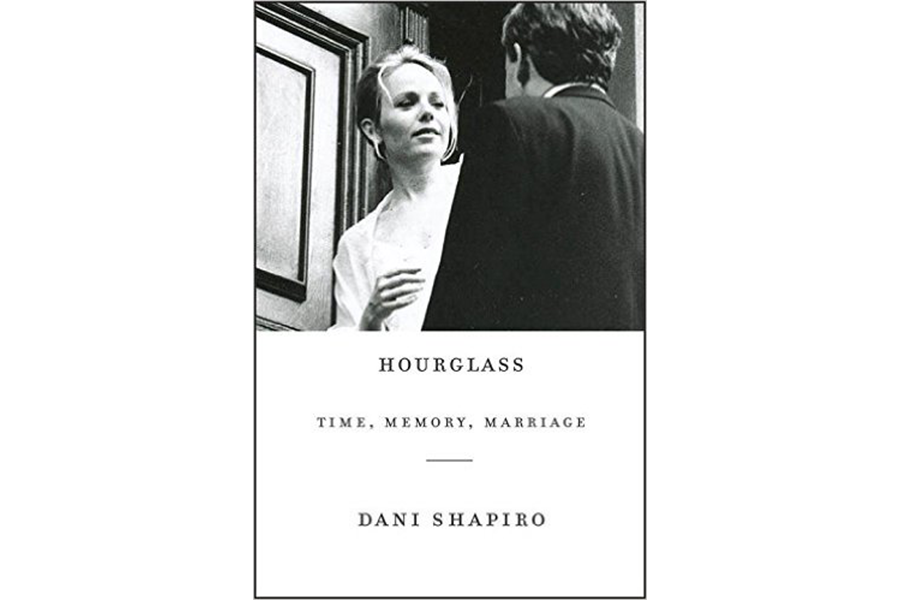'The Hourglass' is an insightful, exquisite deep dive into a marriage
Loading...
Early in the new memoir by novelist/memoirist Dani Shapiro ("Devotion," "Black & White"), Shapiro and her husband are driving home from a neurologist’s office, having just been told that their six-month-old son has a rare, likely lethal disease.
“I looked over at M. as we crossed the bridge,” Shapiro writes. “His hands were tight against the steering wheel, and he was blinking rapidly. I wanted to reach out, to tell him that everything was going to be okay, but I knew no such thing, and I was afraid if I moved even a fraction of an inch I might disintegrate.”
This is marriage in a moment of crisis, instantly recognizable to anyone who has ever loved wholeheartedly, committedly, and long. In moments like these we discover, whether we want to or not, how we really feel about the person whose body has hollowed the other half of the mattress, and how we feel about ourselves in relation to that person: where our shadows overlap, where they diverge.
“Marriages often don’t survive something like this,” Shapiro thinks, knowing it will be months or years before they know whether their son will live or die. The marriage and the child do survive, and that’s good news for her, and for “M.,” who clearly adores her, and for their thriving, now-teenaged son. It’s good news for us, too, because Shapiro’s deep dive into the nature of lifelong marriage is the pulsing heart of this insightful, exquisite book.
Despite the impact of their son’s illness on the couple’s early years, and unlike most marriage memoirs, Hourglass is not a tidy, linear, three-act tale: This is how we came together, this is how we struggled, this is how we triumphed or came apart. Rather, the book’s medium is its message, its title true to its shape. An hourglass is a curvy, not an angular thing; laid on its side, it resembles the infinity sign. Likewise Shapiro’s portrait of marriage replicates its disorderliness as well as its intended permanence, its habitual yet unpredictable nature.
“We’d fallen for each other the moment we met,” Shapiro writes, “spent almost every night together after our first date; married after seven months; had a baby two years into our marriage. We were innocents. We were in the infancy of us.”
In its infancy the relationship is flawless; of course it is. A son is born, almost dies, lives; books and screenplays are written; the towers fall, a move to the country is made. The foundational dynamic of the relationship is laid.
“I’ll take care of it, M. said,” Shapiro writes. “A familiar refrain, one I have always loved and long to believe. This longing – my longing – is part of our marriage. We have been together for nearly two decades…. The creaky house, the velocity of time, the accretion of sorrow. The things that can and cannot be fixed. I’ll take care of it.”
A decade passes. In adjoining home offices Shapiro and M., a former war correspondent, write, sell their writing, chase off woodpeckers, drive their son to school. M. makes a film that succeeds critically, but fails to launch the directorial career of his dreams. Money becomes a problem. Shapiro becomes the reluctant, sometimes resentful breadwinner and spousal cheerleader.
“Maybe I should have kept doing it,” M. recently said to me, in a rare moment of looking backward…. What would have happened if he had taken the assignment, gone to Baghdad, chosen to write the book,” Shapiro writes. “Instead, he has walked a long way down this road with me. The house, the yard, the wife, the boy, the dogs, the schools, the quiet countryside. I believe he doesn’t regret it. But still, has being with me stopped him from being him?”
Thanks to Shapiro’s tender mastery of her story and her craft – knowing when to dwell in detail, and when the bird’s-eye view will better situate the author’s own small experience within the species’ – "Hourglass" yields a rare combination of lyrical writing and startling, sometimes disturbing insights.
Reading" Hourglass" is like spying on the slow, intimate dance of two imperfect, well-intentioned humans, moving through their devotion and their doubts, riding the quotidian tides of passion and contentment and antipathy. They lose the beat for a moment, and we hold our breath, anxious for them to fall back into step. She looks over his shoulder, scanning the room, and we silently urge her to focus on this perfect moment, on her imperfect, chosen man.
Meredith Maran’s latest book, "The New Old Me: My Late-Life Reinvention," is just out from Penguin.








